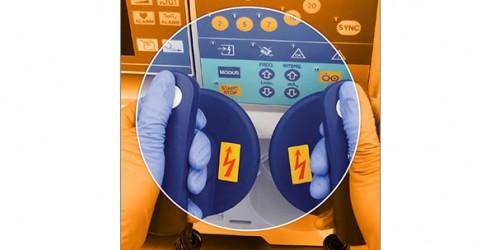The Roundtable: Defibrilators
Defibrillators are important life-saving devices. These medical devices serve to return the heart muscle to a normal rhythm.
Wed Jan 01 2014
Defibrillators are important life-saving devices. These medical devices serve to return the heart muscle to a normal rhythm.
The first use of a defibrillator on a human was in 1947 when one was used on a 14-year-old boy. The device, along with an antiarrhythmic drug, brought about a normal sinus rhythm. Many advances have been made when it comes to these life-saving devices and it looks like more advances are on the way.
This month, TechNation asked experts to answer questions about the defibrillators used today. The panel of experts who weighed in on our questions are Bob Peterhans, General Manager, Emergency Care and Resuscitation with Philips Healthcare; Jim Theis the CEO with Jet Medical and Paul Kamps the Vice President of Customer Service with Physio-Control Inc.
WHAT ARE THE LATEST ADVANCES OR SIGNIFICANT CHANGES IN DEFIBRILLATORS AND IN THE DEFIBRILLATOR MARKET IN THE PAST YEAR?
Theis: The biggest change has been in options, Spo2, NIBP, ETCo2, and others parameters.
Kamps: The trend continues to be adding additional monitoring parameters like end-tidal CO2 as well as adding connectivity to devices. Connectivity is helping hospitals meet the need for data collection from defibrillators. Collecting and reviewing data can be very powerful. We see customers using the information from their defibrillators to improve a response team’s performance and thus give patients a higher level of care. Defibrillators continue to become more sophisticated, physically compact and integrated into the systems of care.
Peterhans: The most recent changes to defibrillators stem from the idea of communication. This communication can be between the device and the user or the device and a network. For example, changes in manual defibrillators include CPR feedback technologies that help the clinician understand how the process is proceeding. Changes also include automated self-test notifications that report ready-for-use results in real-time to the clinician and biomedical engineer. A third change is Wi-Fi communication that allows the device to report patient event data and convey device readiness status.
HOW WILL THOSE CHANGES IMPACT THE DEFIBRILLATOR MARKET IN THE FUTURE? HOW WILL THEY IMPACT EQUIPMENT MAINTENANCE?
Theis: The more you put on the more there is to break so more maintenance is required.
Kamps: Higher reliability, increased technology and additional parameters packed into an even more compact form factors indicated that less “repairs” are likely to take place in the field. This is especially the case where an individual doesn’t have the volume of repairs needed to stay proficient. On the other hand as devices become more connected the data and device awareness capabilities will assist in determining readiness, sending notifications of potential issues, managing configuration options and upgrading software.
Peterhans: These changes will impact the defibrillator market by increasing the communication between the devices and the professionals that use them, analyze their data and repair them. In the long run self-tests that report a device is ready-for-use both directly on the defibrillator and via Wi-Fi to biomedical engineering team, will reduce the number of maintenance calls.
Read the full artical on the January 2014 issue of TechNation
Read the full artical on the January 2014 issue of TechNation

